Fish pond
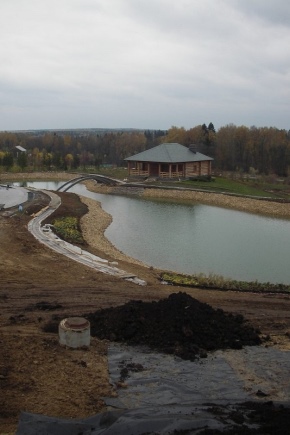
It is very important to know how to dig and DIY a pond in a fish farming area. We'll have to deal with the device of the pond for breeding crayfish and fishing. You will also need to familiarize yourself with the main points of care.
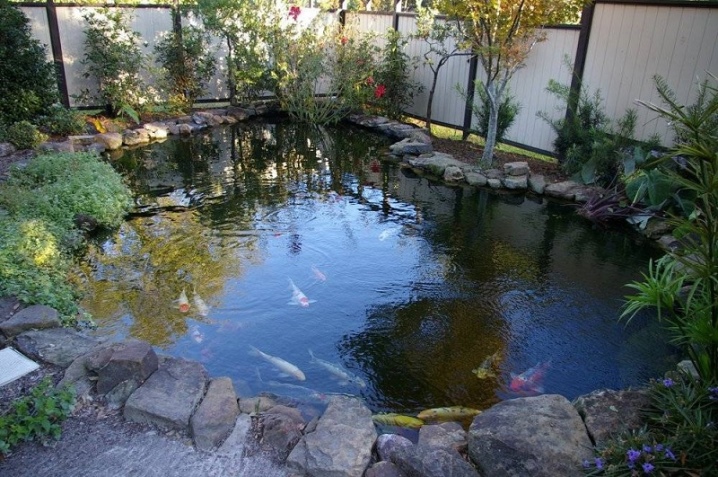
Advantages and disadvantages
Dachas and country houses with ponds look more beautiful and solid. Therefore, the desire to acquire a home near the pond or to make it with your own hands is quite understandable. The advantage of such a solution is not only the decoration of the territories, but also the possibility, due to additional details, to turn the same pond into the main object on the site. It is also worth noting that:
- it is pleasant to rest and relax near the pond;
- there you can go fishing;
- changing the appearance of the reservoir for the season gives ample opportunities for photo sessions;
- a personal bathing place will appear on the site;
- humidity will increase, which will improve conditions for many cultivated and wild plants;
- it will become easier to breathe;
- the pond will collect excess moisture, and the waterloggedness in the rest of the area will decrease;
- in cold weather it will be possible to organize an artificial ice rink.

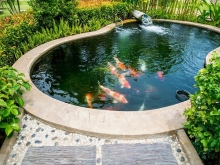

However, the disadvantages of such an arrangement also exist, and they are quite weighty. In particular, the body of water must be constantly looked after. In the summer months, the water is clogged with algae, and with the onset of autumn - fallen leaves. The pond will inevitably attract amphibians and reptiles, which are useful for nature and for economic needs, but sometimes cause purely aesthetic rejection. Nor should you ignore:
- active reproduction of mosquitoes and other insects;
- forced growth of weeds;
- the danger of infection of plants with a fungus;
- the need to strengthen the coastal soil (if this is not done, it can get wet, turn into mud);
- the need to periodically change the water in the pond, which is laborious, time consuming and expensive.
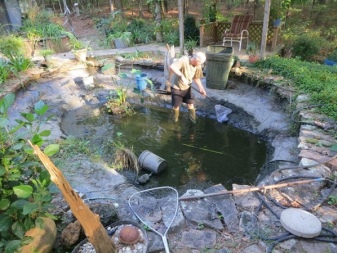
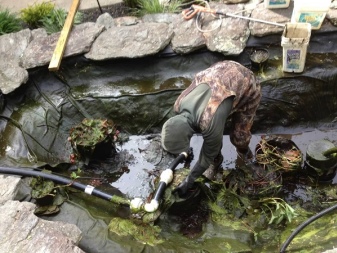
Views
Designers of reservoirs immediately seek to decide whether it is necessary to build a dam or whether a pond will be equipped on a digging site. The first option is suitable if there is already some kind of water flow and it can be blocked by hydraulic structures. The second involves using ground water to fill the bowl. As for the division of ponds into natural and artificial, it is obviously conditional. It is necessary to understand that in fact you will have to equip such a reservoir on purpose, that is, it only happens to be artificial.
Nevertheless, there should be some division on this basis. Reservoirs made of concrete are considered fully artificial. Natural ones are those that are prepared with purely earthen shores, perhaps reinforced with nets and gabions, but retaining a natural appearance. Some of the modifications are reserved for ornamental fish farms.
Others are intended for fishing, and crayfish can also be bred in the pond - separately from the fish or together with it.
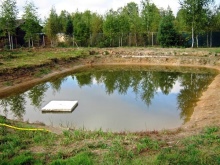
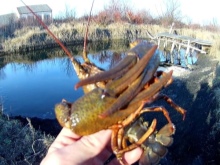
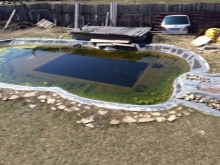
Ponds with a smooth contour, natural curves are perceived very well. But you can easily equip round or oval ponds. The main requirement is to fit into the overall garden concept. The landscape option suits almost any style. Visually, it seems that he was initially on the site, that is, there is no question of any foreignness.
The regular type is exactly the opposite. It is necessarily made with clear, laconic geometric shapes.It is advisable to combine such a reservoir with a regular garden. It is possible to reveal the advantages of the composition if all the banks are clearly visible from the house and from the platform in front of it.
A round bowl of water will soften the space and reduce the visual acuity of the composition.

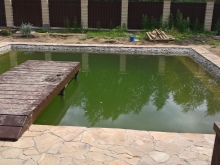
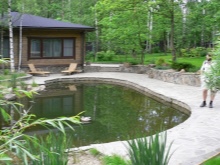
Projects
Do not think that even a small pond in a summer cottage can be made without careful design. A good plan necessarily includes:
- image of the reservoir from above and in section;
- information about the area and depth of the excavation;
- bottom landscape;
- placement of pipes or other sources that supply the pond with water;
- filter placement points;
- beach area;
- decorative additions.
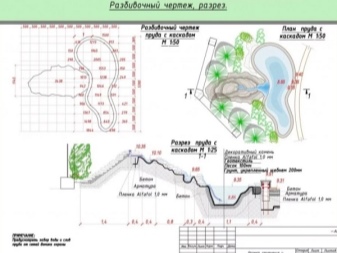
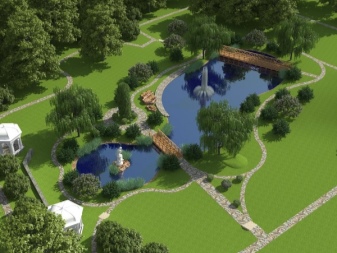
This diagram shows:
- distribution of depths;
- general shape of the excavation;
- soil type;
- landing points of aquatic vegetation.

The desire of the owners of many summer cottages to acquire a small pond is quite understandable. A large body of water simply does not fit in their areas. But nevertheless, it is necessary to start from the minimum size, which is determined by the protection against freezing in winter under normal conditions. Therefore, the surface area cannot be less than 4 square meters. m, and the depth is below 0.8 m. However, for large fish and deeply growing aquatic plants, these parameters should be even greater; then the minimum depth is 1 m, and sometimes not less than 2 m (for sturgeon, trout).


But the depth can also vary at different points. This is how its distribution in a well-thought-out pond for breeding fish and crayfish looks like, the zones are clearly shown:
- 0,5;
- 1,2;
- 2;
- 3;
- 4;
- 1;
- 1.5 m.

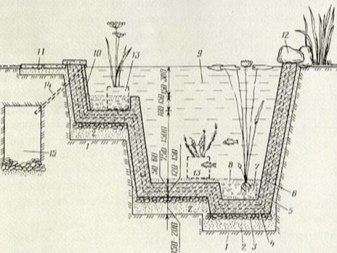
Seat selection
The right decision can be made taking into account the composition and structure of the soil, as well as the level of the location of the soil water. If there is an initially present cut on the site, then it is quite logical to equip a pond there. In the absence of depressions, you will have to choose a place for the pit additionally. In this case, they are guided by:
- good overview from different places;
- direct insolation of the reservoir for a maximum of 5-6 hours per day;
- exit to the north and east;
- the inadmissibility of arranging the excavation under the trees, which increases the clogging in the fall.


How to do it right?
Pit
The arrangement of pond banks must be calculated exactly for the design volume of water. That is why attention should be paid to the accuracy of the calculations. Certain wall slope is critical. Long straight sections should be avoided due to the danger of collapse. Comparatively small parties are rarely affected by this problem.
You can dig a small pit with your own hands. But this is a very laborious and long-term business. You will need to attract at least 3 people to work:
- one is inside and picks the soil;
- the other rakes the soil from the surface to the side, excluding its excessive accumulation;
- another monitors the progress of work and, if necessary, helps partners.
Pits deeper than 2.5 m must be strengthened. Once this depth is reached, a pair of rings is lowered down. The bottom must be leveled and cleaned. If it is decided to dig a bowl under the pond with an excavator, you will have to fold the excavated soil as far away from the walls as possible. You will have to constantly monitor the state of the bowl, track any changes and inhomogeneities: if relatively little soil water comes in, the walls are strengthened and continue to work manually.
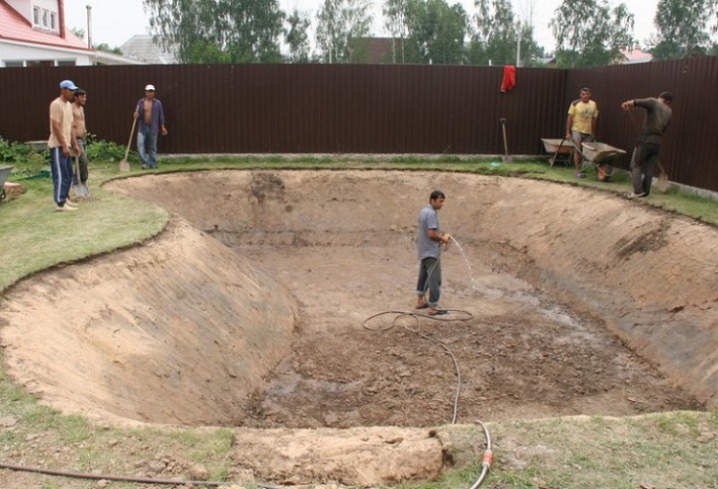
Insulation
It is quite possible to build self-made reservoirs without waterproofing. This approach is widely used in developed countries. The clay shell is completely natural and meets the most stringent requirements. Due to it, you can completely do without film, eliminating negative manifestations. In addition, substantial savings are achieved and maintenance is noticeably easier.
The clay is carefully pounded with shovels. Be sure to take care of the water drainage channels. You can put the clay mass as soon as it has ceased to stick to the instrument. At the edges, you need to create a layout of clay 0.15-0.2 m above the intended bar. Over time, she will still get smart and settle down.
To protect the bottom from water seepage, plastic inserts are sometimes placed there. Their color can be any at the choice of the owners. But there is also a minus - the shape of the structures is monotonous, which greatly complicates the design of the bottom cover of the reservoir in the personal plot. The most durable solution is to concrete the bottom.
Such a step is suitable for reservoirs, regardless of the area and other nuances, but the concrete frame is expensive and laborious.


Finishing
No matter how strong and reliable the structure is, you need to understand that you cannot limit yourself to strengthening it. Even if the structure seems to be of a purely utilitarian nature, it will definitely have to be completed step by step so as not to disrupt the appearance of the site. This reservoir should also be fenced off from children using protective railing. Decorating the shores is done using:
- films imitating natural stone;
- creating bridges;
- arrangement of flooring;
- framing with small tiles or capital stone slabs;
- backfilling of pebbles and other small stones;
- sandy beach equipment.
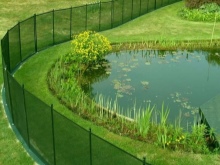
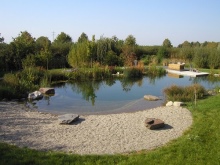

Settling fish
When the main phased structure is formed and when the pond has been ennobled, you can already follow the instructions for equipping and populating it with the right inhabitants. Ambitious people can set aside their home pond for sturgeon. He needs to maintain the temperature between 15 and 24 degrees. For wintering, it is better to prepare an additional pool with carefully controlled conditions.
It is imperative to prepare a closed water supply system. For 1 sq. m of the reservoir, a maximum of 60 kg of sturgeon (fry and adults together) is required. For koi carp, optimal conditions are created at temperatures from 15 to 30 degrees. For a short time, you can admit a temperature corridor from +2 to +35.
The pond must have an integrated biomechanical filtration system; the larger the reservoir, the easier it is to maintain the required environmental parameters.
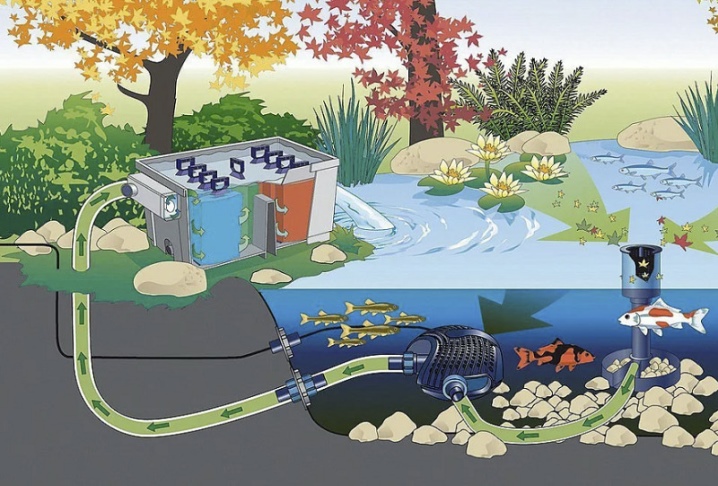
If crucian carp is chosen, the area of the water surface is more important than the volume. On 1 hectare, you can lay 100-200 kg of fish. Catfish are populated in early spring, before they have time to activate. During the spawning period, this species is quite aggressive. When choosing a trout, 1000 year-olds are placed on 1 hectare, and it is strictly not recommended to exceed this figure.
The main conditions for her:
- the entry of 7 to 8 mg of oxygen per 1 liter;
- temperature from 15 to 18 degrees;
- calcination of water.
It is better to launch juveniles of any breed after the first mosquitoes appear. It is advisable to use either non-competing species or entering the food chain. But in the second case, the livestock will have to be supported with new additions. At the time of stocking, strong temperature fluctuations are unacceptable.
Because of them, aquatic animals usually experience severe stress and take root less well.
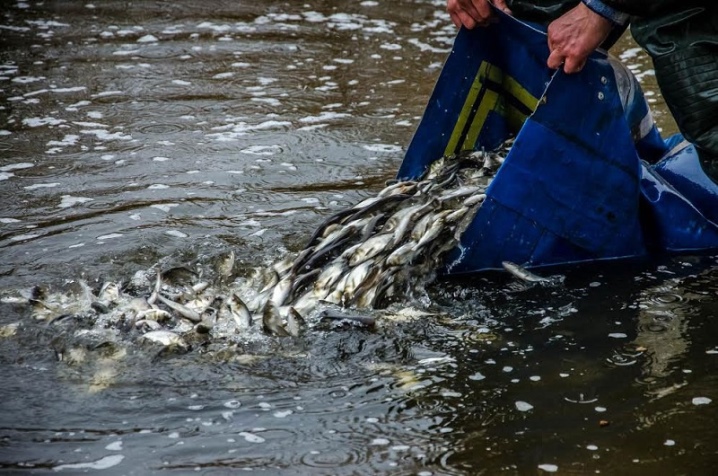
Follow-up care
In the spring, you should assess the condition of the pond and prepare the plants for planting. The earlier seasonal work starts, the better. Be sure to inspect all equipment, make sure whether the fish survived, whether the coast is collapsed. All such shortcomings are removed immediately. In order for the ice to melt faster in early spring, it is spilled with hot water or several holes are punched.
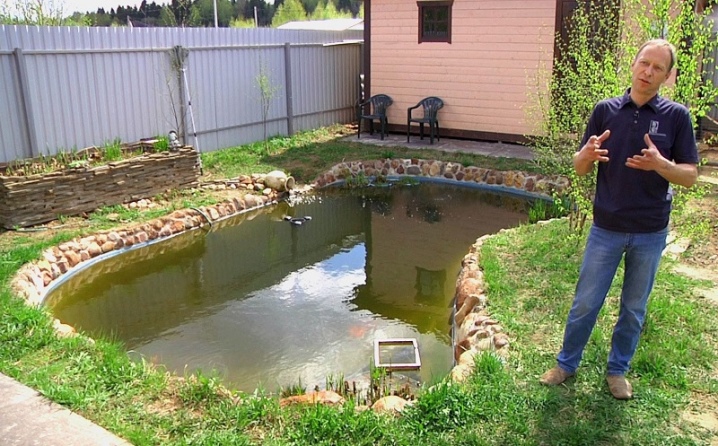
For planting in fish ponds, pond and urut, floating aponogetons and salvinias, water lilies, lilies, Siberian irises are recommended. There are also such recommendations:
- remove organic residues from the bottom of the reservoir;
- constantly monitor the water level, especially in hot weather;
- remove the food remaining uneaten by fish;
- avoid overfeeding aquatic inhabitants and excessive fertilization of plants;
- avoid the ingress of pesticides for the garden and vegetable garden into the water;
- clean the pond from floating leaves in the fall;
- trim plants on the shore so that they do not hang over the water (except for weeping willows and other similar crops);
- provide protein nutrition to fish before the onset of cold weather;
- exclude overpopulation of the reservoir;
- drain small (no more than 1 m) ponds before winter.
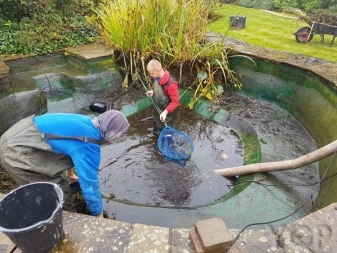
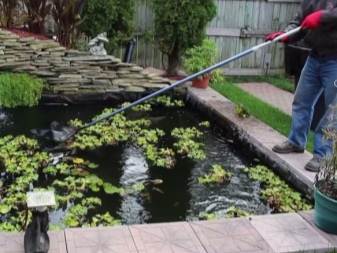
You can find out which fish is profitable to breed in a small pond on the site from the video below.



































































The comment was sent successfully.